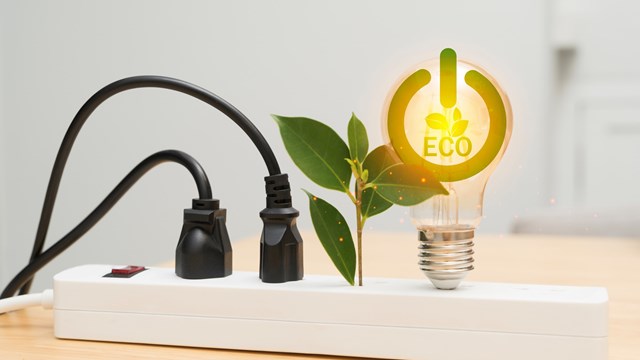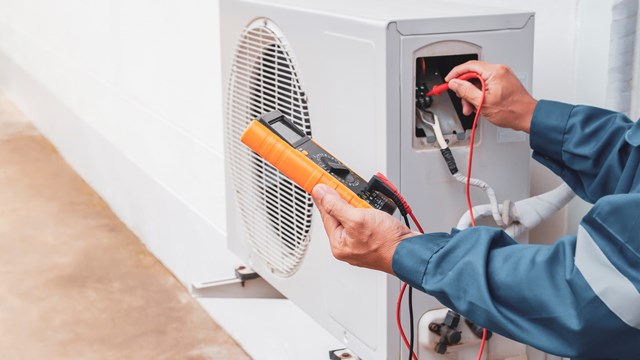
There's nothing worse than bad lighting. Take an otherwise beautiful room and illuminate it with the wrong kind of light - whether too dim, too bright, too hot, too cold, too pale, or too bleak - and the mood, feeling, and livability of the space is ruined. And the worst of the bad-lighting culprits are the cold, bleak, buzzing, latter-generation fluorescents that make you feel like you're trapped in some Soviet-era mental hospital, or the Matrix, or some other world that has forgotten its love for humanity.
From an environmental perspective, of course, using fluorescent lighting, especially the compact fluorescent lighting (CFLs) - the kind developed to replace the screw-in incandescent bulbs - is the absolute right thing to do. Incandescent and halogens lamps use energy like it's going out of style, so much so that a colleague of mine calls then "SUBs" or "Sport Utility Bulbs." The reason is pretty simple: they make light by heating a filament until it glows, with 90 percent of the energy going to heat, and only 10 percent coming out as light. CFLs, on the other hand, produce light by another, mechanism entirely - as is evidenced by the fact that you can touch them when they're on without getting burned - and use about one-thirds to one-quarter of the energy for the same amount of light.
What's more, because you're not torturing a thin piece of metal with high volumes of electricity, CFLs, which don't endure the same stress of intense heat, tend to last about thirteen times longer (about 10,000 to 15,000 hours). Which means if you use your CFL for eight hours a day, it will last for 3-4 years, compared to 3-4 months for the SUBs. In terms of cost, CFLs generally run between $10 and $17, although sometimes you can find deals for as low as $6 or $8. This is compared to the 75 cents for the SUBs, but since CFLs last so long (that's thirteen replacement SUBs you don't have to buy) and save so much energy, they typically pay for themselves within one to two years, depending on how much you use them.
The only problem is that most people associate today's CFLs with the old-school, hideous, depressing fluorescents that somehow still persist in the bleaker corners of society, and hate the very idea of them. But let's be clear, bad lighting is totally counter to the basic principles of green building. Green building is not part of the old school environmentalism where people are asked to suck it up and sacrifice their personal comfort to save Mother Earth. Not that there's anything wrong with a little sacrifice and an overarching respect and awareness of the planet, but if warm, full spectrum energy efficient lighting is available - and improvements in CFL technology have made it so - then the thing to do is understand what makes quality of light good and what makes it bad, and to make sure that you get both the better environmental product and the better lighting product.
When shopping for CFLs, there are essentially three variables to keep in mind: brightness, color, and color rendering. Brightness is the most straightforward of the three. A wide misconception about CFLs is that they are not as bright as their SUB counterparts, but that's only because it's easy to get confused and buy a CFL that isn't as bright as you want. Most people are used to thinking of brightness in terms of watts, since we've been around enough 60, 75, and 100 watt incandescent bulbs to know the difference implicitly. But a watt is a measure of power (rate of energy consumption), not of brightness, and hence it's the wrong unit to use. The unit to pay attention to is "lumens," which actually measures brightness. CFL packages will probably tell you what type of incandescent the CFL replaces, as in: "Use this CFL to replace a 60 watt incandescent bulb."
And while this advice is usually trustworthy, you can eliminate your uncertainty by knowing what brightness you want. Replacing a 60 watt incandescent bulb? Look for a CFL with at least an 870 lumen output. Replacing a 75 watt bulb? Get at least an 1190 lumen CFL. And for 100 watt incandescent bulbs, look for a CFL with an output of at least 1750 lumens.
But perhaps the main reasons people don't like fluorescents is because they look too blue, or they're not as "warm" as regular incandescent bulbs. Even worse, fluorescents make things, especially people, look pale and bleak (no offense intended). So what is it about candlelight and the bare incandescent that we like so much, that is so romantic? To answer this we have to understand a little about the physical nature of light.
Most of the light sources we're familiar with, such as the sun, incandescent light bulbs, and fluorescent lights come to us as a spectrum of different colors, with each color in them mix having a different intensity. In the case of the sun, the color with the strongest intensity is blue/green, but it also contains all the colors in the rainbow, not to mention some colors we can't see, such as infrared and ultraviolet. When colors mix together like this, we call it "white" light, the same way white noise is a combination of many frequencies of sound. The reason incandescent light bulbs seem warmer is that the strongest colors are the reds and yellows, while the blues are not as pronounced. Incandescents, like candlelight, flatter us by making us seem like the hot-blooded tanned beauties we are. In the old fluorescents, on the other hand, the blues are more pronounced, while the reds and yellows are muted, painting us as pale and sickly.
Fortunately, for those concerned about both quality and vanity, fluorescents come in a variety of different colors. But just to make things confusing, most CFL packages describe the color of the light in terms of temperature (the convention for this comes from quantum physics and black body radiation as you may remember from your college days). Daylight ranges from 2,000 K at sunrise and sunset (K stands for degrees Kelvin - the temperature unit of preference for scientists) to 6,500 K at noon on a clear summer day. Color temperatures for incandescent and halogen lamps are warmer (i.e. redder), ranging from 2,500 K to 3,000 K, while older fluorescents came in higher, bluer temperatures. New technology fluorescents, however, offer warmer options, ranging from 2,700 K to 5,000 K, so if you're looking for warmer fluorescent lights, you just need to make sure you buy the ones with lower temperatures.
But what is arguably more important than the color is the ability of the light to illuminate the colors of the objects it shines on. If the light doesn't have a strong presence in all areas of the spectrum, the missing colors it lacks won't show up as well. Stand in front of an old bathroom fluorescent and see what happens to your skin. Because there's not enough red in the light, the red in your face that makes you so fabulously attractive doesn't show up, and all you're left with is your paler hues. This quality is called "color rendering," and is described by the aptly-named "color rendering index," or CRI, that ranges from 1 to 100. The closer you get to 100, the more accurately the light renders color. As a general rule of thumb, good color rendering scores anywhere between a 70 and an 80, and anything above an 80 is considered excellent. Daylight and incandescents both score a perfect 100. The old fluorescents were terrible in terms of color rendering, but the newer technology is vastly improved, with scores as high as 85 to 88. But don't assume that the light you're buying has a high CRI number. Some on the market do and some don't, so you have to look on the package and make sure.
Finally, since CFLs are high-tech pieces of equipment, it's worth shelling out the few extra dollars for the big name brand, as these tend to have the bugs better ironed out, which means no flickering when you turn them on, no early burn-outs, and no weird interference effects with the rest of your electronics.
The environmental skinny on indoor lighting is pretty simple: fluorescent lights save gobs of energy, which means less pollution, less chance of a blackout, and less need for more power plants. What's more, although they cost more up front, they are among the biggest money savers out there. And while many people can't stand the idea of fluorescent lighting, the newer technology offers not only an energy-efficient product, but a product that actually produces good light to boot. The only problem is that you can't
tell how good the particular brand of light is going to be until you shell out $6-$17 for it. And if it doesn't produce the light you wanted, you're saddled with it for the next four years, which is how long it will last before it burns out. So do your homework, and understand the product specs before you buy. After all, energy-efficient lighting can look great, but bad energy-efficient lighting is still bad lighting, and it does little more than to color all things environmental in an ugly hue.






3 Comments
Leave a Comment